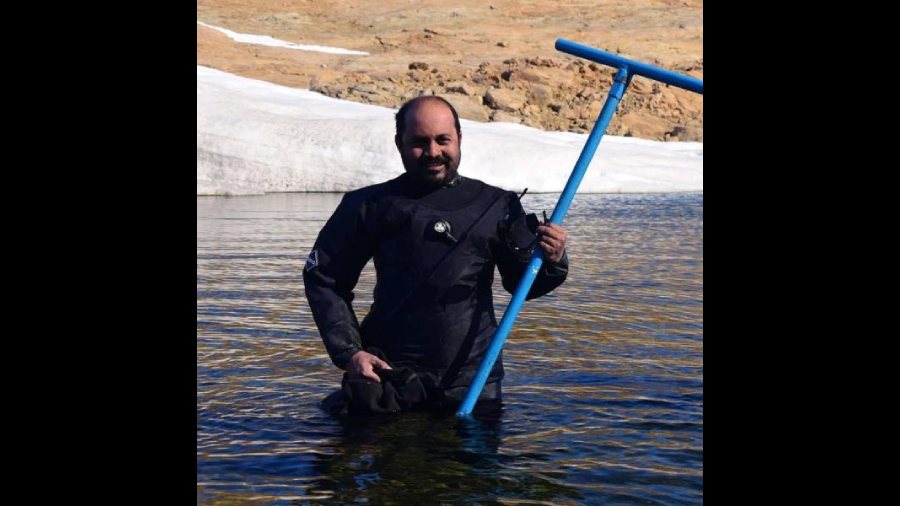A geochemist from Calcutta who spent two months on Antarctica has helped resolve a long-standing puzzle of how algae and mosses thrive on the ice continent despite their exposure to potentially lethal ultraviolet radiation.
Supriyo Das, who teaches geology at the Presidency University and went to Antarctica to study plants in extreme conditions, has found evidence to suggest that the algae and mosses protect themselves by making compounds called n-alkanes.
Scientists have known for decades that ultraviolet radiation from the sun can harm living organisms through damage to genetic material within cells. A layer of ozone high in the atmosphere serves as a protective blanket over the planet, but industrial compounds have been eroding the ozone layer. The compounds carried by winds cause the most pronounced ozone depletion over Antarctica.
“Antarctica is the best place to study how plants respond to ultraviolet radiation because of its pristine conditions and because it is devoid of other factors such as air pollution that might also interfere with observations,” Das told The Telegraph.
Some researchers have earlier suggested that plants must be synthesising special compounds that allow them to tolerate elevated ultraviolet radiation levels on thecontinent. But the protection mechanisms remainunclear.
Das, who signed up for the 38th Indian scientific expedition to Antarctica in 2018-19, had spent two months at the Indian base there called Bharati, studying algae and mosses on the Larsemann Hills, an ice-free oasis and among the warmest areas in Antarctica.
The average annual temperature at the Larsemann Hills is minus 9.8 degrees Celsius with an average of 0.6 degree Celsius during January and 15 degrees Celsius during August. Das probed algal mats growing at lake bottoms and mosses in the moist areas on land, thriving in low temperatures despite being bathed by ultraviolet radiation.
He noticed that algae and mosses were green in the deeper section of the lakes but varied from red to grey in shallower parts. Scientists had previously documented an increase in colour pigments due to protective compounds in Antarctic mosses.
Das, however, suspected that the colour change involves the biosynthesis of colour pigments and other compounds such as n-alkanes. In lab studies, he found that the greater the exposure to the ultraviolet radiation, the greater the abundance of n-alkanes in the plants.
“The n-alkanes in the Antarctic algae and mosses serve a similar function as anti-ultraviolet sunscreen lotions do on human skin,” said Das, who collaborated with scientists in academic institutions in Bangalore, Lucknow and Japan.
The scientists have published their study’s findings in the journal Organic Geochemistry.
Their work could also provide insights into how food crops respond to ultraviolet radiation. “An all-season ozone hole, about seven times larger than the springtime Antarctic ozone hole, has existed over the tropics since the 1980s,” Das said.
“Crops in the tropics feed half of the world’s population. We need to understand better how the mechanisms adopted by plants against ultraviolet radiation might influence crop yields.”










